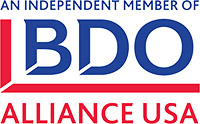
By Alicia Young
As 2021 comes to a close, there are steps you can take now to minimize the amount you may owe with your 2021 tax return. There are also planning opportunities to minimize future tax liabilities. Below are some actions to consider. If you have any questions or would like to discuss further, do not hesitate to call us at 708-386-1433.
1. Loss Harvesting
Loss harvesting is selling investments held in a taxable account, such as stocks in a brokerage account, whose selling price has fallen below your purchase price to realize the loss. The loss is then used to offset taxable capital gains. Short- and long-term losses must be used first to offset gains of the same type. If your losses of one type surpass your gains of the same type, then you can apply the remainder to the other type of gain. If you end up with an overall net capital loss, you can use up to $3,000 of that loss to reduce ordinary income in the current year ($1,500 for MFS) and the remaining loss carries over to future years. The loss carryover does not expire. Note, to avoid “wash sale” rules, when you sell an asset at a loss, you or your spouse must wait 30 days before reinvesting in it or purchasing a nearly identical investment.
2. Maximize Pre-Tax Retirement Savings
As 2021 wraps up, you may be able to put more money from each paycheck into your retirement account. You can contribute up to $19,500 to your 401(k) plan in 2021, plus an additional $6,500 if you are 50 or older. The pretax contributions will lower your taxable wages and decrease your tax liability.
3. Contribute to a Traditional IRA
You can make a contribution until April 18, 2022. The 2021 contribution limit for traditional IRAs is $6,000, plus an additional $1,000 if age 50 or older. Your traditional IRA contributions may be tax-deductible. The deduction may be limited if you or your spouse is covered by a retirement plan at work and your income exceeds certain levels.
4. Roth Conversion
Under current tax law, you can convert all or a portion your traditional IRA to a Roth IRA. The deadline for doing this is December 31st. Unlike a traditional IRA, qualified distributions from a Roth IRA generally are not subject to federal income taxes, as long as the Roth IRA has been held for five years and you are 59½ years or older. When you convert from a traditional to a Roth IRA, you’re required to pay income taxes on the amount of your deductible contributions as well as any related earnings. If you anticipate being in a lower tax bracket now versus the future, it could be advantageous to convert to a Roth IRA and pay the taxes now. From an estate planning perspective, your children will not be required to distribute the assets in an inherited Roth IRA until ten years after the account holder has passed, so the funds continue to grow tax free the whole time. When distributions are taken, your children will not be taxed on them (assuming the original owner met the five-year holding period).
5. Qualified Charitable Distributions (QCDs)
In 2020, under the CARES Act, seniors and retirees were allowed to waive their required minimum distributions (RMDs) without having to pay a penalty. But the RMD waiver only applied for last year so RMDs are back for 2021. Anyone who is at least 72 years old by the end the year is required to take an RMD for 2021.
When determining how much to withdraw from your IRA, you may want to consider making a qualified charitable distribution (QCD). A QCD is a direct transfer of funds from your IRA to a 501(c)(3) charitable organization. For those that don’t itemize, QCDs allow them to not only make a charitable donation but also reduce their taxable income. The amount of the QCD, up to $100,000, is excluded from taxable income and counts towards your RMD for the year. To make a QCD, you must be 70 ½ yrs. or older and the funds need to be transferred directly to the charity. If you receive an IRA distribution and then donate it yourself, it will not be treated as a QCD.
6. Above-the-Line Charitable Contribution Deduction
For the 2020 tax year, there was a new “above-the-line” deduction for up to $300 of charitable cash contributions. Taxpayers who took the standard deduction on their 2020 tax return (rather than itemizing) could take the deduction. One deduction was allowed per return, even if married filed joint. The deduction lowers both your adjusted gross income and taxable income. For 2021, one deduction is allowed per person, so married filing joint filers can deduct up to $600 of cash donations to qualifying charities on their 2021 tax return.
7. Open a Donor-Advised Fund
Donating cash, stocks, and other assets to a donor-advised fund (DAF) allows you to deduct the entire contribution in the year you make it. The funds are invested and grow tax-free. You can decide what IRS-qualified public charity to grant the funds to. Contributing a lump sum in 2021 may push you over the standard deduction amount and allow you to itemize instead on your tax return.
When considering donating to charity, keep in mind that you can donate appreciated stock to a charitable organization or DAF. For stocks held long term, your charitable deduction will be the fair market value, and you avoid paying any capital gains tax for the stock. Current year deductions are limited to 30% of AGI but the IRS allows a carryover of any excess for five years.
8. Gifts
The ongoing negotiations in the House of Representatives may lead to a significant reduction in the federal gift and estate tax exemption. In 2021, you can gift family members up to $15,000 per year without being subject to the federal gift tax. Both you and your spouse are entitled to the annual $15,000 exclusion so the total for you and your spouse to gift a family member is $30,000. By giving the gifts now, your estate will not pay estate taxes on it, and it will not be taxable income for the recipient.
9. Repayment of Deferred Social Security Tax
The CARES Act allowed self-employed individuals and household employers to defer payment of social security taxes for the 2020 tax year for two years. Half of the deferred Social Security tax is due by December 31, 2021.
10. Contribute to a 529 College Savings Plan
Contributing to a 529 plan by year-end won’t impact your federal tax bill, but it could reduce your state tax liability. Many states allow not only parents but also grandparents and others to contribute to your child’s plan, and some allow them to deduct the 529 contributions, too. The rules vary by state.
For Illinois residents, you are allowed to subtract up to $10,000 in contributions if you are single and $20,000 if you are married filing joint for contributions you made to the “Bright Start” program, the “College Illinois” Illinois Prepaid Tuition Trust Fund, or the “Bright Directions” program during the tax year. The total subtraction for contributions made to both college savings plans may not exceed $10,000 for single filers and $20,000 for joint filers, even if you contributed more. Contributions to any other IRC Section 529 programs may not be deducted.
11. Q4 2021 Estimated Payments
If an unexpected transaction occurred in 2021 that greatly increased your income, such as a large gain on the sale of stock, let the firm know so that we can determine if you need to make a Q4 2021 estimated tax payment. Federal and Illinois Q4 2021 estimates are due by January 18th, 2022. This will minimize penalties from being assessed when your tax return is filed in April 2022.




